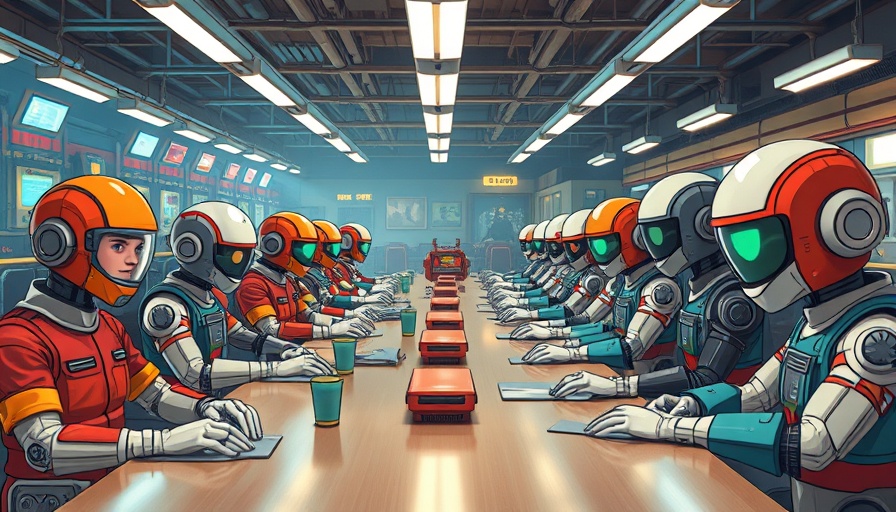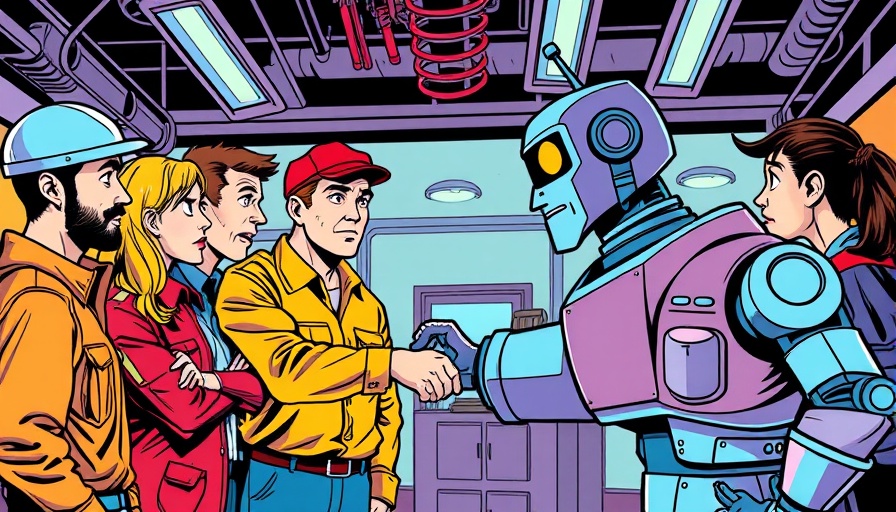
Unpacking the AI Revolution: What Workers Really Want
The rise of artificial intelligence (AI) in the workplace is accompanied by significant tension—largely between the expectations of management and the aspirations of workers. With a recent Stanford study illuminating these dynamics, we must delve deeper into what employees truly desire from AI systems. As we explore the landscape of automation, the findings suggest a clear trend: workers are less interested in being replaced and more focused on leveraging AI to enhance their work experience.
In 'How Much AI Do Workers Actually Want?', the study explores the disconnect between management's objectives and workers' expectations regarding automation. We analyze the findings to understand the implications for businesses.
Identifying the Divide: Management vs. Workers
The Stanford University study surveyed over 15,000 workers across various occupations to discover their preferences regarding AI integration. This examination comes at a pivotal moment in the job market, especially following the wave of layoffs in tech companies and a decreasing demand for college graduates. While there’s a general consensus on automating menial tasks, glaring disagreements arise when the conversation shifts toward job displacement.
One striking outcome of the research reveals that only 2% of workers desire complete automation of tasks. In contrast, a significant 69% prioritize automation that enables them to focus on higher-value responsibilities. These findings underscore a crucial concept: rather than a binary view of replacement versus augmentation, we should frame our understanding of AI in terms of collaboration.
Understanding the Automation Landscape
The study introduces the 'human agency scale', which ranges from full human control (H5) to full AI control (H1). This perspective is vital for navigating the broad spectrum of tasks that AI can support. Tasks positioned in the "automation redlight zone" encompass sensitive activities, like preparing meeting agendas or conducting essential research, where even slight errors could have dire consequences. Workers prefer to handle these tasks manually, favoring their expertise and ensuring accurate outcomes.
The Case for Collaboration Over Replacement
A noteworthy point raised by Angel Anuham, CEO of Avela Health, highlights the disconnect between startup founders and the realities of the roles they aim to automate. For instance, while 41% of startups are developing tools in the red zone, they may overlook the complexities of specific occupations, potentially leading to ineffective solutions. Understanding the nuances of these roles is essential for successful AI integration.
Navigating the Greenlight and R&D Opportunity Zones
On the other end of the spectrum lies the "automation greenlight zone", where both employees and management welcome AI's intervention. Examples include mechanical engineers utilizing AI for report interpretation and tax preparers using automation to schedule appointments. Such scenarios exemplify the potential for mutual benefit.
Moreover, the "R&D opportunity zone" indicates where workers wish for further automation, despite current technology lagging behind. Take technical writers arranging material distribution as an example—a pivotal task where there’s a desire for smoother processes, but existing AI capabilities have yet to reach optimal efficiency.
The Future Skills Landscape: Preparing for Change
No discussion of AI in the workplace would be complete without considering the changing skills landscape. According to the study, skills related to data analysis may see a decline in valuation as AI capabilities improve. In contrast, soft skills that emphasize effective communication will become increasingly vital. This indicates a shift toward roles that require significant human interaction and oversight as automated processes take on more repetitive tasks.
Closing Thoughts: Embracing AI for Workforce Evolution
As we reflect on the insights from this pivotal study, one thing stands clear: the opinions and experiences of workers must play an integral role in how AI technologies are adopted. Management would do well to continuously engage workers during this transformative process. Workers not only navigate the workflows daily but also help identify which repetitive tasks can be automated.
In conclusion, the key takeaway is the recognition that workers are open to collaboration with AI, provided they have a voice in its implementation. For business owners, this means investing in AI technologies that truly augment human capabilities rather than replace them entirely. There’s no better time to start integrating AI into your operations—today’s insights indicate that it's not just about efficiency, but about enhancing the overall work experience. START USING AI NOW.
 Add Row
Add Row  Add
Add 




Write A Comment